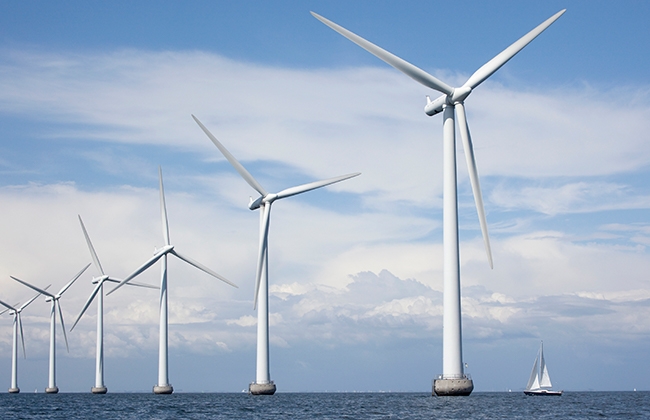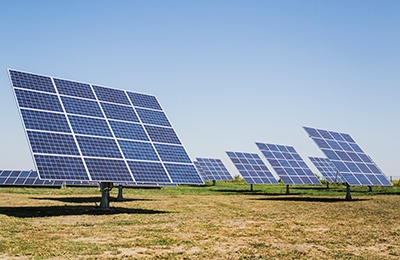
North American project finance rebounding, led by renewables and infrastructure funds
Bullish factors include energy and environmental policy, low interest rates, and substantial fundraising for acquisition and development of infrastructure assets.
Project finance in the United States has staged a vigorous recovery— aided by the ability of banks to provide liquidity, low funding costs, and a more liquid bond market—since the initial dampening effect of the COVID-19 pandemic, according to the Project Finance team at MUFG.
Erik Codrington, Head of Project Finance in the Americas; Nanda Kamat, Head of Americas Infrastructure; Alex Wernberg, Head of U.S. Power; and Ralph Scholtz, Head of Project Finance in Latin America; shared their views at a virtual roundtable hosted by MUFG in September, 2020.

Key drivers for project finance – Erik Codrington
We see four main factors that have largely remained intact since before the onset of the coronavirus pandemic, and that are driving heightened project-finance activity in specific areas:
- Energy and environmental policy: Throughout the Northern Hemisphere, policies are driving a continued large build-out of renewables, especially in the U.S. and Canada, as renewables take market share away from coal and nuclear power generation.
- Natural-gas expansion: Referring to liquefied natural gas (LNG), we believe that we’re at the tail end of capital investment for a substantial expansion of the U.S. LNG, midstream and petrochemical sectors, which has largely been driven by record natural-gas production. (LNG is the product of natural gas that has been super-cooled into a liquid state for shipment to consumers overseas.)
- Low interest rates: We see project finance benefiting from record-low, long-term funding rates for asset-based financing, which are spawning substantial refinancing and hedging opportunities. Additionally, a depressed level of economic activity and accommodative monetary policy are driving rates even lower than they were prior to the current crisis.
- Growth of infrastructure funds: Another bullish factor has been the high level of fundraising and activity among infrastructure funds, which are continuing to acquire and develop assets across all the sectors that MUFG covers. We attribute this growth to the ongoing scramble among investors worldwide for attractively yielding assets to support the retirement of baby-boomers.

Renewables lead the way – Alex Wernberg
We can point to renewables as one of the most active sub-sectors in new energy project development in the United States—particularly in the realms of battery storage, offshore wind, and community solar—with California and Hawaii at the forefront of the renewable push.
You can see some of the tensions with the rolling blackouts in California because of the demand on the grid and reliance on renewables. This shows the need and the drive for the next phase of the expansion into battery storage. We’ve been talking about batteries for a long time and this year we’re starting to see the transactions come in.
Looking at the effect of the COVID-19 pandemic on the U.S. energy industry, it should be noted that energy projects take years to develop, and since these projects have a typical useful life of 25–40 years, they tend to be shaped by broad macro factors such as environmental policy, fiscal policy (i.e., taxation and government expenditures), and regulation rather than by episodic events such as pandemics. Yet we believe the low interest rates induced by the current economic environment have created more incentive to finance. Politicians are talking about environmental concerns and the need for new jobs to stimulate the economy, and it’s fueling more energy investment.
We observed an acceleration in deal flow before the COVID-19 pandemic that has resumed and increased, with transactions growing larger in size from several hundred million dollars—the typical cost of a renewable energy project—to billion-dollar transactions.
Infrastructure trends in a post‑pandemic world – Nanda Kamat
We see a host of salient themes in infrastructure investment and finance:

- Expansion into communications and services: The first quarter of this year saw record- breaking levels of capital-raising by infrastructure funds—and we see a lot of money chasing deals. Many infrastructure funds are venturing beyond traditional infrastructure and into communications and services.
In the traditional category, we include transportation, water, and social infrastructure, which encompasses facilities that provide social services such as healthcare and education, as well as public facilities (e.g., community housing) and transportation (e.g., airports, roads and railways). Communications and services comprise telecommunications infrastructure—such as broadband, data centers, and cell towers—and related service providers.
We believe that COVID-19 is proving the thesis that communications infrastructure is essential, based on the surge in broadband usage since the pandemic broke out. We have seen the telecommunications space accounting for a significant share of deal activity this year—including mergers and acquisitions—and believes this trend will continue.
- The effects of declining transportation volume: Transportation assets such as toll roads, airports and ports are volume-dependent—and although all usage has declined since the coronavirus outbreak, toll roads have gained much of it back with the help of commercial traffic. Aside from supply chains that rely on the continuing transportation of goods, people still need their packages and groceries delivered. Additionally, ports have suffered from lower trade volumes—but we believe that their historical resilience to economic downturns bodes well for the asset class.
We also believe that declining passenger traffic at airports may help speed up existing projects that are already undergoing construction or renovations. All the same, COVID-19 is dissuading public authorities from undertaking new construction projects given the lower expected income resulting from fewer passengers. Notably, transportation authorities that are dependent on user fees or tax revenues are delaying new projects because of concerns over the budget to pay for them.
- More public-private partnerships (P3s) based on availability payments: Despite the negative impact of COVID-19 on public authorities’ budgets—and consequently on the project pipeline—we believe that the number of P3s will increase going forward as state and local governments try to figure out the best way to finance and deliver infrastructure in a budget-constrained environment. For example, in the communications infrastructure space, we’re seeing more discussions around P3s to do broadband.
P3s do not necessarily need to take the form of so-called “revenue risk” deals, which secure the project’s revenues as the funding source (such as the toll revenues of a highway) that permits long-term financing at the outset of a project. Rather, the possibilities offered by “availability payment” concessions, by which the funding source is the government’s commitment of annual payments to the finance provider over the life of the long-term agreement, subject to the project continuing to meet various performance requirements (i.e., to be available for use and remain in good shape).
MUFG does many deals that have availability payments from public offtakers when it doesn’t make sense to structure them on a revenue basis for a private investor. Rural-broadband development is one example of the type of project that creates a crucial public utility—yet would not be economical for investors and finance providers, because revenues from broadband usage in sparsely populated rural areas would be insufficient to justify the capital expenditures on the infrastructure. COVID-19 has created the need to expand broadband access across the country. We’re seeing states looking into building broadband network in rural areas and in such cases, availability payments would be more suitable. We expect that P3s will increase moving forward, but the nature of them may change, and we may see fewer revenue-risk deals in the short term.

A challenged Latin America – Ralph Scholtz
The adverse public-health and economic consequences of COVID-19 in Latin America are being felt especially now. We’ve sees the decline in sovereign credit spreads, which had spiked in April, and financing activity is highly dependent on sovereign spreads within each country.
Project-finance activity at large slowed down quite a bit in the second quarter and now we’re seeing a reactivation of projects. The due diligence on projects has to be adjusted to take into consideration the COVID-19 impact which is triggering delays in construction and equipment delivery.
We believe the financial markets in Latin America are recovering and should catalyze new project development that would tap the bond and bank markets for financing. The economic contraction has been severe in the region, but countries that started off in a position of strength—Chile comes to mind— are seeing a lot of activity in the power sector. We expect other countries such as Peru, Colombia and Mexico continue to be investment grade, but the impact on each economy varies.
We are also seeing “greenfield projects” in Latin America—projects that entail the development of new facilities—tend to be in the power sector, and that lower interest rates are presenting significant refinancing opportunities for existing projects.